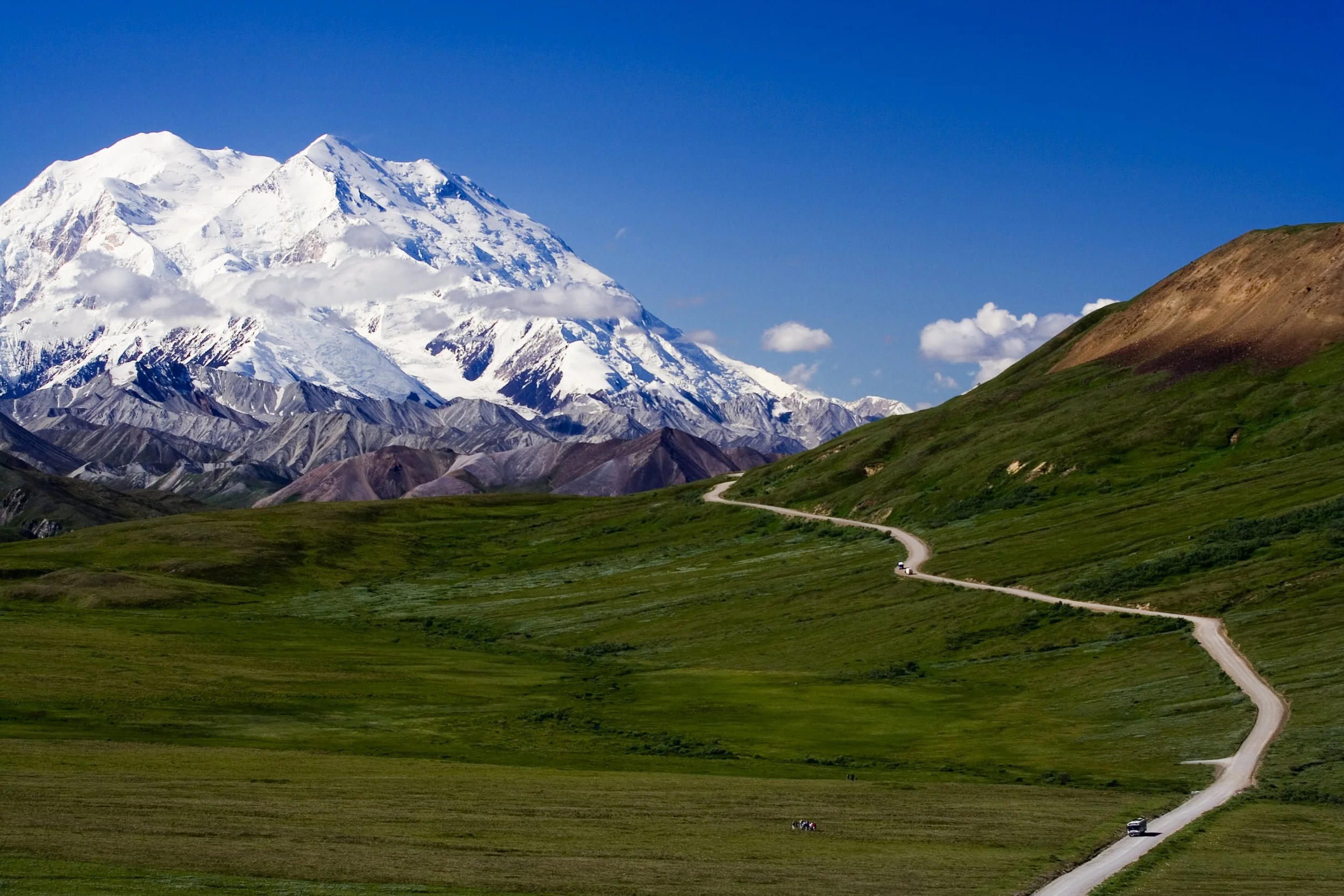Why Do People Hitchhike in Denali National Park?
I live and work in Denali National Park during the summers, and since I started I’ve noticed many Denali oddities that are unique to the area. One of the most surprising things to me in my first summer living at Denali National Park was the relatively high number of hitchhikers looking to catch a ride up or down the George Parks Highway. Growing up, I often heard about hitchhiking (or picking up hitchhikers) as being an inherently risky, frowned upon, and sometimes even illegal relic of past generations. While it was once a very popular way to get a quick lift or else travel on a budget, hitchhiking is now all but gone. Hitchhikers in most places are few and far between, and people willing to pick them up are even fewer. Nevertheless, hitchhiking is alive and well in Denali, and I know many people who will hitchhike or pick up hitchhikers when in the Denali Park area without a second thought. Why is that so?
To begin with, hitchhiking is legal in Alaska. Most towns in Alaska, like those close to Denali National Park (Cantwell and Healy) are very small. This leads to a heightened sense of community shared by residents. That sense of community naturally extends to others who are in the same area. It’s a shared culture of sorts. Contrast that with the cities and states where the population is significantly higher. Nearly everyone you see while driving is a stranger and it feels scary and unpredictable to think about giving them a ride. In Alaska, though, many are happy to offer a ride to travelers or other Alaskans. People are happy to give you a lift down the road as far as they’re already going. On top of all that, Alaska is also so huge and wild that if you see someone hitchhiking, it may not just be a kind thing to offer a ride but a prudent choice to support that traveler’s safety.
Another contributing factor to hitchhiking’s acceptance in Denali is that Denali Park and the nearby town of Healy have a lot of seasonal workers, visitors, and tourists. Seasonal workers, such as guides for hiking tours or rafting trips, hotel employees, or even restaurant staff will often fly to Alaska (rather than drive) to work during the summer. Consequently, a lot of these employees have no car to get around, and are usually the adventurous type with no qualms about hitching a ride with a stranger. With the sprawling layout of the Denali National Park area, it just doesn’t make sense to navigate five to ten miles on foot to get to your favorite Denali eatery. Visitors are often also without a vehicle, whether they arrived by train, bus, or some other way. There are shuttles and services around the Park, but those typically run on a schedule. It’s normal to see groups of people walking down the highway to get to their destination. These groups are not always hitchhiking, but if you’re a part of one of them, don’t be surprised if someone offers you a ride!
Finally, there are common activities in the Denali Park area that often have people ending up away from their cars. Popular hikes like the Triple Lakes Trail take you a long distance away from where you started, and hikers may opt to try to catch a ride up the road rather than doing a full out and back. Budget traveling is becoming more common as well, and in a state as broad as Alaska, hitchhiking is an easy tight-budget option for traveling the state.
Overall, as strange as it was at first, I find the hitchhiking culture in Denali to be a very cool and unique quirk of the area. It has certainly altered my perspective on hitchhiking in general and I love the idea of a sense of community and good will extended towards strangers you may never again see in your life. Now, this isn’t meant to advise anyone to hitchhike or pick up hitchhikers during their Denali visit. But as someone who was curious myself, it will hopefully provide you with a quick explanation of this Alaskan phenomenon that (I believe) makes the state even more special.


